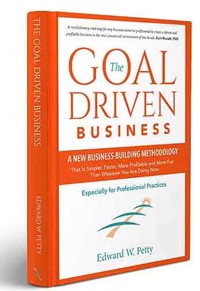
Download the Tent Poster for your office.[2025 June 6 Discipline]


Download the Tent Poster for your office.[2025 June 6 Discipline]

Grow Your Chiropractic Practice with Online and Offline Strategies
Many chiropractic offices see success with online advertising, especially on social media. While effective, it often requires digital expertise, so many chiropractors hire agencies—some with better results than others. If you’ve worked with a good agency, sharing your recommendation could help others.
Online promotion isn’t new to chiropractic. B.J. Palmer, one of the profession’s pioneers, was a relentless advertiser who played a major role in chiropractic’s growth during the early 20th century. His legacy reminds us that consistent promotion is key.
However, in today’s tech-saturated world, offline engagement is more valuable than ever. Creating relationships with patients is critical. The relationship business in a chiropractic office revolves around building trust, fostering patient loyalty, and creating a community that supports long-term engagement and referrals. Chiropractic care is inherently personal, as it involves hands-on treatment and addressing patients’ pain, mobility, and wellness goals. The success of a chiropractic practice often hinges on strong relationships with patients, staff, and the broader community.
Your practice is essentially a network of relationships, sustained through communication and service. So:
Some effective offline tactics include:
Combining digital and personal outreach creates a powerful, sustainable marketing strategy. As Woody Allen once said, “80 percent of success is showing up.”
“80 percent of success is showing up” (Woody Allen)
Stay Goal Driven,
Ed
References:
*(B.J. Palmer, Achievers Magazine, 1989)
*Brad Glowaki
*(Woody Allen (Quote Investigator)

In the article *He Fired the Chiropractic Assistant When the Stats Went Up*, Ed Petty discusses how a positive attitude at the front desk can significantly impact the success of a chiropractic office. He compares busy and struggling offices, noting that busy offices often have a welcoming, “open” attitude, with a motto like “Always room for one more!” These offices focus on getting as many people as possible in for adjustments, creating an atmosphere of openness and enthusiasm. In contrast, less busy offices tend to have more rules and prioritize collections over patient care.
Petty shares a story of an office where the front desk assistant, despite being new to computers, became incredibly enthusiastic after attending a chiropractic seminar. Her attitude transformed, and visit numbers skyrocketed. However, due to computer issues and billing frustrations, the doctor fired her, which resulted in a decline in visits and the eventual loss of an associate. Petty argues that the doctor should have hired someone for data entry, allowing the front desk assistant to continue her work of promoting chiropractic care.
The article emphasizes that the front desk plays a crucial role in driving office volume and that a “high capacity” mindset is essential. Petty encourages chiropractic teams to ask their front desk if they can handle increased patient visits, and similarly, evaluate their own capacity for growth. He concludes with a call to adopt a “Big Capacity” attitude, referencing his book *The Goal Driven Business* and his upcoming Practice MBA program, to help chiropractic offices grow and succeed.
Read the full article here [LINK]

Ed touches on the reasons why 2025 could be a promising year for chiropractic practice owners and healthcare entrepreneurs.
Health Care Advocacy: Robert F. Kennedy Jr., a prominent advocate for health and environmental issues, has been vocal about his concerns with polluters and health agencies like the CDC and EPA. His activism, including his work against companies like Monsanto and ExxonMobil, has earned him recognition in the healthcare space. The incoming presidential administration, under President-elect Trump, is expected to grant Kennedy significant influence to address healthcare matters, providing optimism for the future of natural healthcare.
Support for Small Businesses: Elon Musk, a notable entrepreneur, is also involved in the new administration and advocates for the protection and growth of small businesses. Musk emphasizes that while starting a business can be challenging, the right environment can help independent businesses thrive. His support for entrepreneurship signals potential benefits for chiropractic and other small business owners.
Historical Legacy of Health and Fitness: The article also references the historical efforts of the Kennedy brothers in the 1960s to promote public health and fitness, such as fitness testing in schools and cleaner air and water standards. Musk’s own family background, with his great-grandfather being the first chiropractor in Canada, ties the legacy of chiropractic to modern entrepreneurship and innovation.
The article concludes with an optimistic outlook for healthcare entrepreneurs in 2025, encouraging chiropractic practice owners to think big and embrace opportunities for growth in the coming year.
Read the full article here: https://www.goaldriven.com/post/why-2025-could-be-your-best-year-in-chiropractic-practice

This article provides a comprehensive checklist for chiropractors to prepare their practices for the end of the year and the upcoming new year. With 2025 just around the corner, the focus is on winding down advertising and shifting toward internal marketing strategies during November and December. Key ideas include:
Planning for the Future:
Business Essentials:
Start with a clear vision and remain focused on both immediate tasks and long-term objectives for continued success in the new year.

“Over the long run, superior performance depends on superior learning.”
— Peter Senge
As the Clinic Director of your chiropractic and healthcare practice, you instinctively know that if you are not continually improving the service to your patients and potential patients, they will go to practices that are.
In fact, if you do not provide the BEST outcomes and service in your area, patients and potential patients will look for other practices that are the best, or at least better than you.
The BEST health care practice wins in the long run.
So, how do you get to be the best?
By constant improvement!
This was the concept the Japanese pushed in the 1970’s with their cars. They called it Kaizen.
Speaking of Japan, there was a study that showed how many hours employees trained over a 6-month period. Japan spent an average of 364 hours, Europe averaged 178, and the U.S. a paltry 42.* I discuss this more in my book, The Goal Driven Business. (pg 156)
The formula for improvement is simple: study and train.
The purpose and goal of training is improvement. This is why professional athletes and musicians constantly train. They do this for improvement and, ultimately, to bring about a good return on their investment.
Improvement has a definite ROI! A study by the Associate for Talent Development found that companies offering comprehensive training programs have 218% higher income per employee compared to those without formalized training.*
But what are the best methods for training — reading, listening, podcasts, seminars?
The Learning Pyramid* illustrates the percentage of knowledge retained through various learning methods. Here are the typical percentages associated with each method:
This model emphasizes active participation in the learning process. Teaching others or practicing by doing, leads to higher knowledge retention rates compared to passive methods like listening to lectures or reading.
If you take your team to a seminar, do it for camaraderie and the sense of being part of something bigger. It can be motivational. But then, ensure that they take notes from one of the presentations and then teach it to the rest of the team at the next staff meeting.
Another angle is to have team members select a chapter from a book you all are reading (from your Lending Library!) and then have them teach it to the rest of the team a month later.
Train on your procedures every month. For example, you could demonstrate how you would like a patient to be positioned on a therapy table. (Get it recorded for future reference!) Then, have a staff member demonstrate the procedure back to you. You can also pair people and role-play the procedure. Do this for any of your office procedures. For those of you in group practices, doctors can practice their procedures.
The idea is that there are two sides to the learning coin: the information side and the practical application side. You can’t learn how to throw a fastball from reading a book. You must find a baseball and someone brave enough to catch your pitches and practice throwing hundreds of times. However, a book may have useful information on improving your throwing technique from those who have done it more than you.
It is best to go over the idea of training and improvement with your team first so they understand what you are doing and why.
Keep training fun. Your manager should ensure that training occurs every month.
And like Clarence Gonstead said:
“Practice. Practice. Practice. Never stop.”
“Our future will be our results.”
Keep training,
Ed
P.S. Who was Clarence Gonstead, D.C.
References:
ROI on training. An Evidence-Based Look at the ROI of Investing in Training (mentorgroup.us)
Clarence Gonstead https://www.gonstead.com/
The Learning Pyramid the learning pyramid – various percentages of retention. (thepeakperformancecenter.com)
========================
If your practice-building efforts aren’t taking you to your goals, there are reasons — many of which are hidden from you.
Find out what they are and how to sail to your next level by getting and implementing my book, The Goal Driven Business.

 How to support the health of our children
How to support the health of our children
“History will judge us by the difference we make in the everyday lives of children.” Nelson Mandela*
Here in Wisconsin, the Chiropractic Society of Wisconsin, the primary chiropractic association, is sponsoring a Kid’s Day next week, which we are supporting.
Also, I am supporting it with donations from the sales of my book. Please consider contributing directly to the C.S.W. or buying my book (or 20 of them!).
If you look into it, how we treat our kids in the 2020s is probably worse than in decades past. The Styrofoam-like food, the toxins such as Glyphosate and Phthalates in our breakfast cereal, the nano plastics now in our blood, the sugar and seed oil, the escalation of Pharma drugs and shots, the social media, the list goes on and on.
Just look at the stats for health care in America, those that you can find. They are abysmal and getting worse. (I have links to some listed below.)
There are plenty of sources to learn about how we treat our kids, but as you can imagine, they are hard to find on regular internet searches. It’s a little like trying to find the truth about cigarettes or asbestos in the 1950s — you almost have to search out whistleblowers to find out what is truly going on. An e-book that was published in 2018 called The Sickest Generation, by Children’s Health Defense, is a good place to start. (Link below)
People in your community aren’t going to hear too much about this from the media or most corporate-paid doctors – though more independent physicians seem to be speaking out. This is why your work is so vital.
As a side note, promoting health care for kids can build your practice. Helping children get healthier is a great marketing and practice-building strategy.
But first and foremost, the primary reason to see kids is to help them stay healthy.
Chiropractic care can help young children with the bumps and tumbles they take as they grow. Young athletes especially benefit from adjustments. Other independent and naturally oriented health providers, such as those practicing acupuncture and Traditional Chinese Medicine, and functional and integrative medical providers can also be of great help.
But beyond chiropractic adjustments, education and support for a healthy chiropractic lifestyle is fundamental. Educate the parents and help the kids.
Consider contributing to the C.S.W. Kids Day program.
Also, consider encouraging your state association to develop a kids’ program, and if they already have one, please contribute to that.
Ed Petty
Link to Chiropractic Society of Wisconsin: https://www.chiropracticsocietywi.org/chirokids-day
Link to The Sickest Generation published by Children’s Health Defense, https://childrenshealthdefense.org/ebook-sign-up/ebook-sign-up-the-sickest-generation/
More links to references:
*Nelson Mandela. From a Luncheon hosted by United Nations Secretary General Kofi Anan at the special session of the U.N. for Children, New York City May 9, 2002
Link to Chiropractic Society of Wisconsin: https://www.chiropracticsocietywi.org/chirokids-day
Link to The Sickest Generation published by Children’s Health Defense, https://childrenshealthdefense.org/ebook-sign-up/ebook-sign-up-the-sickest-generation/
U.S. Health Care from a Global Perspective, 2022: Accelerating Spending, Worsening Outcomes https://www.commonwealthfund.org/publications/issue-briefs/2023/jan/us-health-care-global-perspective-2022
Ten Thousand Chemicals in Food and Food Packaging: What Are These Substances Doing to Our Children?
Health declining in Gen X and Gen Y, U.S. study shows: https://www.sciencedaily.com/releases/2021/03/210319125436.htm
Mental Health In Schools: A Hidden Crisis Affecting Millions Of Students
275 Studies Showing Food, Exercise and Supplements A.R.E. medicine
https://childrenshealthdefense.org/defender/processed-food-sick-kids-russell-brand/
American children have never been sicker. Over half (54%) are suffering from one or more chronic illnesses.
The “4-A” disorders—autism, attention deficit hyperactivity disorder, asthma and allergies—have experienced meteoric growth, affecting children’s quality of life and contributing to premature mortality.
U.S. children are far more likely to die before their first birthday than infants in other wealthy countries and life expectancy is falling, driven largely by rising death rates in adolescents and younger adults. Suicide is the second leading cause of death in teens, half of whom are reported to have at least one mental, emotional or behavioral disorder.
The proportion of public school children using special education services is skyrocketing, with estimates ranging from 13% to 25% of school populations.
Mystifyingly, there is almost no outcry in medical, public health or government circles to find answers and solutions.

Positioning is a marketing term that refers to how your services are perceived in the minds of customers or potential customers.
For example, you get two different concepts when you think of a Timex $40 wristwatch and a $10,000 Rolex. In selling these products, advertising deliberately tries to position each in your mind so that they are different but appealing.
The fact is, they do about the same thing. But, positioning them can make each more appealing to different groups of people. In marketing Timex watches, for example, they might show busy people working or athletic people with a tagline that says: “takes a licking and keeps on ticking.” On the other hand, Rolex offers images of elegance or authoritative men in suits. Both of these appeal to different groups of people with different wants.
Let’s start with the position chiropractic has in most people’s minds. According to a Gallup Poll in 2015, 60% of Americans think chiropractic is effective for neck and back pain. Only 11% disagree. The rest don’t know or are neutral.
That means that, in consumers’ minds, you guys generally have the position of treating neck and back pain. Here is one approach to using this:
You can position your services with a national health campaign. This is what Big Pharma did with the COVID jabs, and what they do with flu shots. It’s manufactured marketing, of course, and promoted authoritatively as part of a national program.
You can do the same! (An application of guerrilla marketing!)
And remember, your stats are better than Big Pharma’s and corporate medicine! (You should probably ensure that your patients know this.) While respecting the good work of individual MDs and certain medical clinics and organizations, which there now seems to be more of after COVID (E.G. FLCCC), keep in mind that the U.S. medical system comes in LAST compared to other industrial countries.(link below)
The American Chiropractic Association promotes what they call National Chiropractic and Health Month in October. Also, Congress recognizes October as National Spine Health Awareness Month. And although a bunch of MDs also promote this, you could use it. I recall when the ACA, and maybe the ICA, promoted October as National Spinal Health Month.
I don’t think it really matters. You can promote your own National Spinal Health and Fitness Month and position your services next to this campaign. We have done this over the years very successfully. Figure that your campaign is more helpful and therefore more legit than those promoted by the drug industry and its lackeys and mercenaries.
There are dozens of approaches to this. I’d be happy to spend a few minutes with you to give you some ideas that have worked. You could:
Send out reactivation letters. “It’s Spinal Check-up Time!” and offer a free screening, discount massages, or just healthy cupcakes.
Put a banner in your office; “October is National Spinal Health Month — Schedule your family for a Health Check-up.” Print up a poster and fliers and encourage your staff to have patients bring in those they care about for a check-up.
Send out an email promotion for this important national event.
How about another example, maybe for November?
Despite the little medical emphasis on the importance of exercise, people are finding out on their own how vital physical activity is to maintain their health. To some degree, more people are becoming amateur athletes.
Go with this!
Position your services as designed to improve athletic performance. Stay in the Game Longer! Position your services next to famous athletes who testify how chiropractic was essential in achieving their accomplishments in sports. (Link to some chiropractic athletes below.) Promote the fact that all U.S. professional football teams have chiropractors. In fact, you can look up your team’s chiropractor. (link below.)
You could call the team’s D.C. and possibly get a quote or meet with them for a photo opportunity. You could meet with the local high school coach, promote this, and arrange screenings for their players.
By positioning your services next to successful high-performing athletes, the audience can easily make the association that your services must improve physical and functional performance.
So those are a couple of ideas for using positioning to generate more new patients, reactivate former patients, and keep the ones you have.
You’re the coach. Get the team in for care!
Seize the WIN!
Ed
Pro football chiropractors.
U.S. Health system ranks last.
Athlete quotes on chiropractic
Some promotional ideas for October:
Gallup poll on chiropractic favorability.
—————————————————-
If your practice building efforts aren’t taking you to your goals,
there are reasons — many of which are hidden from you.
Find out what they are and how to sail to your next level by getting and implementing my new book, The Goal Driven Business.



“The illiterate of the 21st century will not be those who cannot read and write, but those who cannot learn, unlearn, and relearn.” Alvin Toffler
I just returned from a Parker Chiropractic Seminar.
There were some excellent topics and knowledgeable and informative speakers. I met some wonderful chiropractors and staff, attended a few classes, and learned new things. And, as always, was thankfully reminded of old things.
Some doctors brought their staff. This can be expensive, I know. But it is worth it.
Employee education is essential. First of all, it pays off. Case studies of individual companies show that financial returns vary between an increase of 30% to even as much as 7,000%!*
Stats show that companies invest in employee training. For example, on average, smaller companies (from 100-999) spent $1,678 in 2022 and 67 hours per employee. The total spent on employee training in the U.S. in 2022 was 101 billion.**
This means that even if it costs $5,000 to take your team to a training seminar, you should see an extra $1,500 in collections on top of the money you’ve already spent.
People want to do their best but need the knowledge to do so. I often refer to the Self-Determination Theory, which, through research, has shown that all of us have an inherent desire for advancement and improvement. Good training supports this intrinsic goal.
Providing training for your staff shows that they are an integral part of providing patient care and achieving practice success. It demonstrates your respect for their value as team members.
The world is changing mighty fast — as you know. The Parker seminar had two keynote speakers discussing critical social and health-related issues that are rapidly developing and will impact practices. I will report on this next week. Staying current with evolving technology and social trends allows you and your team to stay innovative and in better touch with your community.
Parker has great classes, but there are many other practical seminars. In the fall, most state associations have conferences with training programs within driving distance of your office. And beyond seminars, there are online courses, books, and your personal teaching.
I often encourage doctors to assign staff to read relevant books, sections of books, or specific videos and bonus them for doing so. The staff can present what they learned at a team meeting so everyone learns.
It is easy to feel we don’t have the time or the money to invest in training – for ourselves or our staff. But with deliberate practice and coaching, training improves performance and income.
Like chiropractic, training doesn’t cost – it pays!
Seize the future through study and training,
Ed
References:
Toffler: “Rethinking the Future: Rethinking Business, Principles, Competition, Control & Complexity, Leadership, Markets, and the World” (1998m Rowan, Toffler)

Be like a juvenile delinquent!
The chiropractic model for care follows three main stages, according to many patient educational articles. These are 1) Relief, 2) Correction and 3) Maintenance and Wellness.
I am sure it could be nuanced into other levels or worded differently, but these three make sense to me — so much that it inspired me to write a book – The Goal Driven Business.
But I had another inspiration.
I read a book about a young French-Canadian rock climber who lived in Southern California and was not finding the equipment he needed. So, he became a blacksmith and started making his own. In the late 1950s and ’60s, he started the Chouinard Equipment Co and made climbing gear for other climbers. He also wanted better outdoor gear, and so founded Patagonia, a clothing company.
The name of the book was Let My People Go Surfing. It was by Yvonne Chouinard and tells the story of how he grew Patagonia.
Patagonia, now a 50-year-old company, has done very well financially. It has also done very well for the quality of its products and services and its employees. But it is also driven by the goal of making Earth healthier.
Patagonia demonstrates three goals I believe every business has: 1) profit, 2) expert service and people, and 3) higher purpose. In my book, I reference examples of how the best companies focus, knowingly or unknowingly, on these three goals.
The best offices I have worked with over the years have also been committed to these three goals. They cared about providing the best service to their patients, but also to their staff. They were committed to helping as many people as possible be healthier. And, of course, they insisted on profits.
Chouinard, with his family, own Patagonia.
That is until this month. Valued at 3 billion dollars, Chouinard announced that they are giving the company away. He could have sold it to … Amazon, for example, or they could have made it a public company. Instead, he donated it to a fund called the Patagonia Purpose Trust. He says, “Earth is now our only shareholder.”
“Instead of “going public,” you could say we’re “going purpose.” Instead of extracting value from nature and transforming it into wealth for investors, we’ll use the wealth Patagonia creates to protect the source of all wealth.”
I encourage you to look into Chouinard’s lessons on business, which he acquired through trial and error as we do! I have some links over on the blog (see below.) There are many business lessons to learn by studying the trials of other business owners in different types of businesses.
But I guarantee you that if you commit to these three goals, in the long run, just like with your patients, your business and your life will thrive.
And one other note!
I think ol’ Yvonne would have been a natural chiropractor. He reminds me of you guys. In an interview in 2017, he says:
“One of my favorite quotes is if you want to understand entrepreneurs, study the juvenile delinquent because they’re saying, you know, this sucks. I’m gonna do it my own way. And that’s what the entrepreneur does. They just say this is wrong. I’m gonna do it this other way. And that’s the fun part of business actually.”
So, have fun, and seize the future,
Ed
For links and other references, go to our blog here: Goal Driven
Ed Petty in front of Chouinard Equipment Company, Ventura California
Patagonia home page
https://www.patagonia.com/home/
Interview with Chouindard
https://www.npr.org/2018/02/06/572558864/patagonia-yvon-chouinard
News articles
https://www.reddit.com/r/climbing/comments/xebzib/yvon_chouinard_gives_patagonia_to_charitable/

Last week I sent an email with a link to Ode to Joy.
Ode to Joy is from Beethoven’s 4th movement of his 9th symphony, considered one of the top three symphonies ever created.
It was a short 5-minute rendition. It is beautiful and evocative – listen to it again. (Link below.) Plus, its performance was a masterpiece.
But it was actually an ad.
It was a brilliant advertisement for a Spanish Bank. It was promoting Sabadell Bank’s 130th year anniversary in 2012. According to one website, it has had 90 million views since 2012, while another posted in 2015 has received over 18 million views.
That is a lot of exposure. But does it generate new business?
This type of advertising is called brand marketing, or what I call indirect marketing. It is the opposite of direct marketing. Direct marketing, also called direct response marketing, tries to generate an immediate response. Knowing the differences will help you manage your marketing and make it more effective for your particular situation.
The goal of direct response marketing is to generate qualified prospects that respond to an offer. When you receive a card in the mail that promotes a free dinner about retirement funds, the company that sent you that mailer hopes you reply and attend the dinner and accompanying talk. At the dinner, a speaker gives a presentation with the hope of scheduling you for a private consultation later that week. When you see an ad on Facebook for a free manual, the advertisers intend that you respond and order their manual. The distinguishing characteristic of direct marketing is numbers – you can quantify the results of your marketing efforts.
The goal for indirect, or brand marketing, is for the name of your business to be well known and well thought of. When you volunteer at the local food bank, co-sponsor a kid’s little league team, or simply provide excellent customer service, these are all examples of indirect marketing. The results of indirect marketing are difficult to identify immediately.
Until you are in Stage 4 in the growth of your business (about 75% or more full capacity), most of your marketing efforts should be direct marketing. Indirect marketing supports direct marketing, but even if your entire town knew about your business and thought highly of it, there is no guarantee that anyone would come to see you as a customer.
Handing out your business card to someone would be an example of indirect, personal brand building. However, handing out your business card with a handwritten note on the back that said something like “N/C screening in May for Joe M. Dr. EP” might be an example of a direct response marketing.
Another factor to consider in managing your marketing is how much should be directed externally – to non-patients and customers and how much should be directed internally to your existing and former patients and customers.
It has been my experience that too few practices are industrious enough with marketing to and communicating with their existing and former patients.
Below is a chart that gives approximate percentages of how to balance your direct and indirect marketing for your practice. I have divided the development of a business arbitrarily into 5 Stages. Figure each Stage to be about 20% your full capacity.

Telling your story and the successes of your services should never end, regardless of how successful you are. Change your marketing strategies depending at what Stage of development your business is in — but keep marketing.
Carpe Posterum (Seize the Future),
Ed
GoalDriven.com

Five engines drive your business to its goals.
If these are installed and firing at 100%, practicing will be enjoyable and profitable. When these engines are not fully performing, the daily demands of running a business shift to, and fall upon, the owner.
These engines are functions and characteristics of a dynamic team that drive the practice toward its goals.
Many offices that seem to be doing well are driven by heroic owners fighting each day to grow their practices, and not by their engines. But this isn’t easy to sustain. At some point, it becomes too much, and they settle into a comfort zone below their abilities. As a result, their long-term goals remain unfulfilled.
This is the plight and path of the entrepreneur – brave, independent, but too often without a map on how to build a strong business that drives itself.
The five engines that drive a business to its goals are:
I want to begin passing on tips on the marketing engine– what is working now and my best estimation of what will be working in the future. Marketing is vital, for without paying customers, the other engines won’t work and aren’t needed.
But before I do, I want to invite you to look at your business and gauge the health of each of your engines.
You can do this by reviewing how successful you are at achieving each engine’s outcomes (goals) and giving them a grade from one to five (1-5). 5 would be the point where the engine is achieving its goals.
By grading each engine’s “output,” you can immediately see what needs the most work.
But these engines do not work independently. One affects the other so that there is a synergy created. As one improves, so do the others. The opposite is also true – the more one engine dies down, the more the other ones do as well.
It could be said that everything begins with leadership, and that may be true. But unless you are marketing your services, there will be no one to lead!
So next week, let’s look at a few effective marketing strategies and tactics that will help drive your business to its goals.
And by the way, how to achieve a 5 for all your business engines is described in The Goal Driven Business. If you haven’t read it yet, I encourage you to do so.
A great new February to you all,
Ed

(This is the third in our series on goals.)
The Cathedral, Stone Blocks, and Your Goals
Christopher Wren was one of the greatest English architects. He designed 53 different churches in London before he died in 1723 at the age of 91.*
There is a story about how he walked unrecognized one day among the men who were at work upon the building of St. Paul’s Cathedral — which he had designed. St. Paul’s Cathedral sits on a hill and is one of London’s most famous and recognizable churches.
“What are you doing?” he inquired of one of the workers, and the man replied, “I am cutting a piece of stone and working hard so I can feed my family.”
As he went on, he put the same question to another man, and the man replied, “I am an expert stonemason, and I am building a solid wall.”
He walked a little further, and around the corner, he asked a third man what he was doing. “I am helping Sir Christopher Wren build a beautiful cathedral that will be a place for worship, where people can come to pray, where the poor can come for clothing and food, for the Almighty.”
This is a parable that has some measure of truth, but I have not been able to find any credible verification. But the point of a story such as this is to illustrate an idea or moral.
All three workers had goals. They expressed these to Sir Christopher when asked what they were doing. We can assume that each stone cutter was skilled, worked hard, and did the same work as the others.
One can guess that their goals kept them motivated. But each viewed their goals differently.
The first two workers had immediate tangible objects as goals – a cut stone block and a well-built wall. However, the third stone cutter’s goal was a purpose, a vision of the future he was working to help achieve.
From this, we can look at all goals at two different levels: at a higher level, such as a purpose, and at a tangible level, which is a practical manifestation of the purpose.
In your practice, these two levels of goals might look something like this:
Higher Goal: Our mission is to help as many people as possible in our community become healthier, relieved of discomfort, and better educated so that they continue to improve their health and those around them.
Practical Goal: A person who completed a program of care, whose pain was relieved and is now healthier and incredibly happy with their results and of the service they received and has enrolled in a wellness program.

Practical goals are quantifiable in a set period. For example, how many new patients can we generate, how many visits can we achieve, and how many programs of care can we complete next month?
There must be an equal emphasis on the higher goal, often called a mission, and the tangle goals, often called quotas or objectives.
Too much attention on the mission, and we live in a dreamland and go broke. Too much attention on production quotas, and we eventually feel like we are on an endless assembly line, find no meaning in our work and lose our motivation.
Like the stone cutters, dream about the cathedral but also set a target for how many blocks you will cut and how many walls you will complete next month.
Both echelons of goals should be viewed, reviewed, revived, and recalculated as needed at each team meeting.
Goals are your future – where you want to be. And, where you want your patients and your community to be. So, nourish them both as a mission and as outcomes, and the work to achieve them will come much faster and easier.
Carpe Posterum (Seize the Future),
Ed
*Wikipedia
A year ago, who knew what the next 12 months would be like?
Yet, here we are today.
As the New Year is just before us, again, one can only wonder at what the future holds. Is this the “New Normal?” How far will it shift in the next twelve months? For you, your patients, and your business?
Wha tever new realities lie ahead, we are ready to help you and your business. We will be launching a new approach to practice and business building with the theme of Faster to Your Future in January. It is based upon the book the Goal Driven Business.
tever new realities lie ahead, we are ready to help you and your business. We will be launching a new approach to practice and business building with the theme of Faster to Your Future in January. It is based upon the book the Goal Driven Business.
But just before we start the New Year, I wanted to pass along a message of encouragement.
It often amazes me that with all the wars, both “hot” and cold, the greed, the fear, and tyranny, with all of mankind’s utter insanity over the centuries, we are doing as well as we are. Somehow, as Abraham Lincoln predicted in his first inaugural address in 1861, “…the better angels of our nature…” came through and prevailed. Whatever challenges we may have, his were enormous. He was facing a nation divided, secession of the southern states, the policy of human slavery, civil war, and a world of other conflicts.
But in the end, there is something about the Innate Goodness of Life that seems to propel mankind forward towards a better future, however slightly. I think that the more we trust in the Better Angels of our Nature, and in the Goodness of Life itself, the more sure our road will be toward a better year for us all and a happier future.
“I have one life and one chance to make it count for something . . . I’m free to choose what that something is, and the something I’ve chosen is my faith. Now, my faith goes beyond theology and religion and requires considerable work and effort.
My faith demands — this is not optional — my faith demands that I do whatever I can, wherever I am, whenever I can, for as long as I can with whatever I have to try to make a difference.”
― Jimmy Carter
So with this, we look forward to working with you to help make 2022 both prosperous and rewarding.
With admiration from all of us at Petty Michel and Associates,
Ed
 Why What You Stand for Is so Important
Why What You Stand for Is so Important
I want to tell you about my experience on TV talking about masks for kids, but first, here is a related short story…
A few years back, an office asked me to meet with them for lunch. They wanted to discuss how their office was doing and if I could help them.
I liked the doctors and had known them for some time. They had a group practice and had been in business for several years. We met over sandwiches, and they said they had been working with a consultant who emphasized “evidenced-based” chiropractic.
My response could have been better as I look back on it now.
Barely concealing my disdain, I asked them whose approval they were seeking. Wasn’t there enough “evidence” from the results that they had with their patients over the years? Sure, double-blind studies are good for validation – but didn’t they already have enough evidence from their happy patients and their remarkable outcomes?
Had I been trying to “sell” them on our services, I would not have acted so irreverently to their seemingly serious question. But, instead, I tried to re-convince them that they did have enough proof, and the problem with their office (one of many problems) was that they were not promoting the successes they routinely achieved with their patients.
The doctors seemed equivocal about their services, so I asked them if they were committed to their profession and helping their patients reach their health goals. Unfortunately, I didn’t get a straight answer.
It seemed that they were seeking approval from some authority – rather than from their neighbors who struggle daily with pain and poor health.
Now, years later, I recently had a friend see one of the chiropractors I met for lunch years ago. The doctor currently works as an employee for a local hospital and the office that he once co-owned no longer exists.
All this is a true story, and the lesson is that you have to have faith, confidence, and belief in your services, and mostly, in yourself.
You must stand up for what you know and use your voice to help others – find theirs.
You shouldn’t be too outrageous as this can completely alienate you from others, not unless you want to! But find your level of certainty, independence, and rebelliousness and help others to do the same.
I was reminded of all this recently when a local TV station asked what I thought about masks for school children. I was on our main street, and a local reporter started asking me questions. You can watch my response and that of others here. Ed’s on T.V.!
Standing up for natural health care,
Ed
Buy my book, the Goal Driven Business. It is a distillation of my 35 years of in-the-field lessons about building a profitable practice and business. It will help you help more people. Go here to learn about the Goal Driven Business –A New Business Building Methodology for Professional Practices